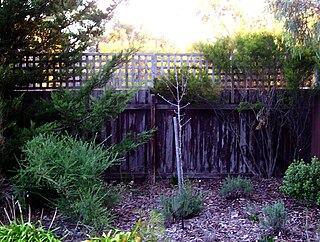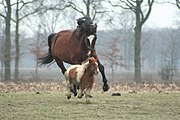The defence of property is a common method of justification used by defendants who argue that they should not be held liable for any loss and injury that they have caused because they were acting to protect their property.

English tort law concerns the compensation for harm to people's rights to health and safety, a clean environment, property, their economic interests, or their reputations. A "tort" is a wrong in civil law, rather than criminal law, that usually requires a payment of money to make up for damage that is caused. Alongside contracts and unjust enrichment, tort law is usually seen as forming one of the three main pillars of the law of obligations.
Harassment is a topic which, in the past few decades, has been taken increasingly seriously in the United Kingdom, and has been the subject of a number of pieces of legislation.
In English law, remoteness between a cause of action and the loss or damage sustained as a result is addressed through a set of rules in both tort and contract, which limit the amount of compensatory damages available for a wrong.

English contract law is the body of law that regulates legally binding agreements in England and Wales. With its roots in the lex mercatoria and the activism of the judiciary during the Industrial Revolution, it shares a heritage with countries across the Commonwealth, from membership in the European Union, continuing membership in Unidroit, and to a lesser extent the United States. Any agreement that is enforceable in court is a contract. A contract is a voluntary obligation, contrasting to the duty to not violate others rights in tort or unjust enrichment. English law places a high value on ensuring people have truly consented to the deals that bind them in court, so long as they comply with statutory and human rights.

Royscot Trust Ltd v Rogerson[1991] EWCA Civ 12 is an English contract law case on misrepresentation. It examines the Misrepresentation Act 1967 and addresses the extent of damages available under s 2(1) for negligent misrepresentation.

Hollier v Rambler Motors (AMC) Ltd[1971] EWCA Civ 12 is an English contract law case, concerning the incorporation of terms into a contract and the contra proferentum rule of interpretation. It shows an example of a very hostile interpretation of exclusion clauses.
South Australia Asset Management Corporation v York Montague Ltd and Banque Bruxelles Lambert SA v Eagle Star Insurance Co Ltd [1996] UKHL 10 is a joined English contract law case on causation and remoteness of damage. It arose out of the property crash in the early 1990s, whereby banks were suing valuers for overpricing houses in order to recover the lost market value. Owners themselves often had little or no money, since they had fallen victim to negative equity, so mortgage lenders would pursue a valuer instead to recover some losses. The legal principle arising from the case is often referred to as the "SAAMCO principle".
Interpreting contracts in English law is an area of English contract law, which concerns how the courts decide what an agreement means. It is settled law that the process is based on the objective view of a reasonable person, given the context in which the contracting parties made their agreement. This approach marks a break with previous a more rigid modes of interpretation before the 1970s, where courts paid closer attention to the formal expression of the parties' intentions and took more of a literal view of what they had said.
Economic torts in English law refer to a species of civil wrong which protects the economic wealth that a person will gain in the ordinary course of business. Proving compensation for pure economic loss, examples of an economic tort include interference with economic or business relationships.

O'Brien v MGN Ltd [2001] EWCA Civ 1279 is an English contract law case, concerning incorporation of terms through reasonable notice.
Dishonest assistance, or knowing assistance, is a type of third party liability under English trust law. It is usually seen as one of two liabilities established in Barnes v Addy, the other one being knowing receipt. To be liable for dishonest assistance, there must be a breach of trust or fiduciary duty by someone other than the defendant, the defendant must have helped that person in the breach, and the defendant must have a dishonest state of mind. The liability itself is well established, but the mental element of dishonesty is subject to considerable controversy which sprang from the House of Lords case Twinsectra Ltd v Yardley.

Karsales (Harrow) Ltd v Wallis [1956] EWCA Civ 4 is an English Court of Appeal decision which established fundamental breach as a major English contract law doctrine. Denning LJ MR gave the leading judgment replacing the Rule of Strict Construction, which require a literal approach to the construction of contract terms.
Illegality in English law is a potential ground in English contract law, tort, trusts or UK company law for a court to refuse to enforce an obligation. The illegality of a transaction, either because of public policy under the common law, or because of legislation, potentially means no action directly concerning the deal will be heard by the courts. The doctrine is reminiscent of the Latin phrase "Ex turpi causa non oritur actio", meaning "no cause of action arises from a wrong". The primary problem arising when courts refuse to enforce an agreement is the extent to which an innocent party may recover any property already conveyed through the transaction. Hence, illegality raises important questions for English unjust enrichment law.

Christopher Sharp (KC) is a British barrister and Deputy High Court Judge residing in Bristol UK, and notable for his high-profile cases and popularity with some of the biggest insurers in the land. As a prominent figure in his field, Christopher Sharp has been included in Who's Who in recognition of the distinction he has attained in his professional life. He has also been recommended by the Legal 500 and Chambers UK every year since 2009.

Crow v Wood[1970] EWCA Civ 5 is an English land law case, confirming an easement commonly exists for the right to have a fence or wall kept in repair expressed in earlier deeds, which is a right which is capable of being "granted" by law and secondly, as a separate but on the facts, related issue, of the right of common land pasture asserted by continued use.

Viasystems (Tyneside) Ltd v Thermal Transfer (Northern) Ltd[2005] EWCA Civ 1151 is an English tort law and UK labour law case, which held that a worker can have more than one employer at the same time, who will be vicariously liable for the worker.
Lamb v Camden LBC[1981] EWCA Civ 7, [1981] QB 625 is a leading case in English tort law. It is a Court of Appeal decision on negligence and the test of reasonable foreseeability of damage, especially where the damage has been caused by third parties not the defendant him or herself.
Cattle trespass was an ancient common law tort whereby the keeper of livestock was held strictly liable for any damage caused by the straying livestock. Under English law the tort was abolished by section 1(1)(c) of the Animals Act 1971, but the tort continues to subsist in other common law jurisdictions, either in its original form as a common law tort, or as modified by statute.

The Animals Act 1971 is an act of the Parliament of the United Kingdom the purpose of which was to codify civil liability for damage done by animals in England and Wales.









